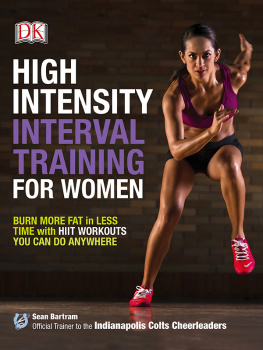
ACKNOWLEDGEMENTS
This publication is based on articles written by David Barr, CSCS, CISSN, Jon Finkel, Bill Geiger, MA, Jimmy Pea, MS, CSCS, David Sandler, MS, CSCS, Jim Stoppani, PhD, Mark Thorpe, Eric Velazquez and Joe Wuebben
Cover photography by iconmen.com
Photography and illustrations by: Art Brewer, Michael Darter, Kevin Horton, Ian Logan, Joaquin Palting, Robert Reiff, Ismael Roldan, Marc Royce, Brian Sanchez, Ian Spanier and Pavel Ythjall
Project editor is Joe Wuebben
Project exercise science adviser is David Barr, CSCS, CISSN
Project managing editor is Jared Evans
Project copy editor is Kristina Haar
Project design by Michael Touna
Photo assistants are Amina Cruz, Yvonne Mejia
Editorial assistant is Nune Gazdhyan
Founding chairman is Joe Weider. Chairman and CEO of American Media, Inc., is David Pecker
2009, Weider Publications, LLC. All Rights Reserved. No part of this publication may be reproduced by Photostat, microfilm, Xeroxgraphy, or any other means, or incorporated into any information retrieval system, electronic or mechanical, without the written permission of the copyright owner. Inquiries regarding permission for use of material contained in this publication should be addressed to: Weider Publications, LLC, 21100 Erwin St., Woodland Hills, CA 91367, Attn: Rights and Permissions.
Triumph Books and colophon are registered trademarks of Random House, Inc.
This book is available in quantity at special discounts for your group or organization. For further information, contact:
Triumph Books
542 South Dearborn Street
Suite 750
Chicago, Illinois 60605
(312) 939-3330
Fax (312) 663-3557
www.triumphbooks.com
ISBN: 978-1-60078-338-8
Printed in USA

CONTENTS

CHAPTER
Six Keys to Intensity
Enhance your workouts and your results by learning how to manipulate one of the most important training factors of all: intensity.
CHAPTER
Get Lean With Supersets
This four-week supersets program will turn your love handles into a washboard midsection.
CHAPTER
Pumped Volume
This bare-bones, single-exercise approach will help volumize your workout and your physique.
CHAPTER
20/10: A Pain Odyssey
Tabata training, born in a Japanese sports lab, is a high-intensity interval program thatll burn fat and build muscle. We predict pain.

CHAPTER
Fulfill Your Density
Build muscle and burn bodyfat in less time with the innovative Escalating Density Training (EDT) system.
CHAPTER
The Strength and Power Complex
Who doesnt want to get stronger and more powerful immediately? Complex Training is the ticket.

CHAPTER
Chain Reaction
Its time to catch on to what elite athletes have known for years: Bands and chains can help you build strength and quality muscle.
CHAPTER
Train for Pain
This forced eccentric workout guarantees more size and strength in three weeks if you can last that long.
CHAPTER
Grim Repper
Experience new muscle growth and fat loss at home or in the gym with this athlete-approved 100-rep program.

CHAPTER
Gone in Thirty Minutes
Make big gains in a half-hour with these ultra-efficient muscle-building workouts.
CHAPTER
Training Notebook
Target individual body-parts with these fine-tuning routines designed to fit into any program.

CHAPTER
Cardio for the Masses
Build size and strength with these four cardio-inspired mass-gaining workouts.
CHAPTER
Break Through to a Better You
Stuck in a nasty training rut? Here are 101 ways to bust out and stay out for good.
CHAPTER
Nine Rules of Nutrition
These nutritional guidelines will lay the foundation for getting bigger and leaner.

CHAPTER
Supplement Your Mass
Add serious muscle to your physique one major mass-building supplement at a time.
CHAPTER 1
SIX KEYS TO INTENSITY
GO BEYOND BASIC SET-AND-REP SCHEMES VOLUMIZE YOUR WORKOUT AND YOUR PHYSIQUE

To some, working out is simply about numbers. Three sets of eight. Four sets of 10. Rest one minute between sets. Do 20 total sets. But beneath every tangible number and finite measurement used to define the amount of work youve done, theres the enigmatic albeit ever-important variable known as intensity. In fact, this might be the most crucial training variable of all.
Intensity isnt a number. It cant be written down in a training log nearly as succinctly as, say, a tally of sets and reps you do for an exercise. And a set of 50 reps isnt necessarily more intense than a set of six. Bottom line: Where training for gains in muscle size is concerned, intensity equals muscle failure.
If your muscles fatigue to the point that you cant do another rep (aka failure), thats an intense set. Stopping short of failure? Not as intense. Yet intensity goes far beyond just one set each set affects the next set, every workout affects the next workout, every week affects the next week, and so on. How you manage your intensity from set to set and workout to workout goes a long way in dictating the effectiveness of your program. That said, theres a certain hierarchy to training intensity, and the best way to articulate it is to start small (with a single rep) and pull the layers back until you see the big picture. Hence, the following six levels of intensity.
INTENSITY OF A REP
To ensure adequate intensity in a set, and subsequently in a workout, you first need to make sure that each and every rep is performed in an intense manner. Of course, the first few reps of a 20-rep set (in which you would use a relatively light weight) feel much different than those of a six-rep set with the heavier weight, the reps feel difficult right away, whereas the first several reps with the lighter weight feel much easier. Yet the amount of weight you use and how many reps you plan to do in that set shouldnt affect each individual rep.
Next page





![Wicks - Lean in 15: [15-minute meals and workouts to keep you lean and healthy]](/uploads/posts/book/228194/thumbs/wicks-lean-in-15-15-minute-meals-and-workouts.jpg)











